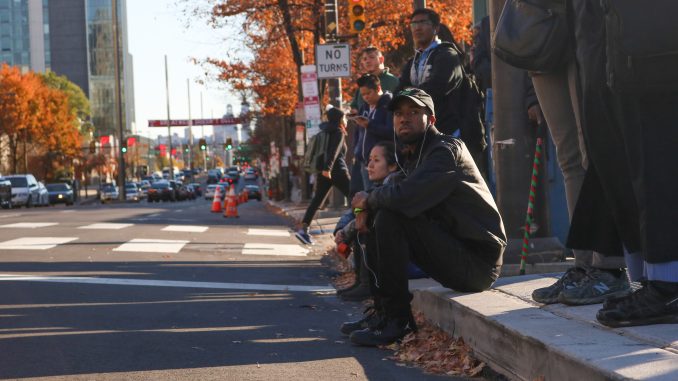
SEPTA and Local 234 workers reached a five-year contract agreement Monday morning, ending a seven-day strike of transit workers that operated the bus, subway and trolley systems throughout the city.
The university implemented an emergency shuttle service to help students, staff and faculty members commute between Main Campus and the rest of the city during the strike. But now that it’s over, students said they were glad to get back to the public transportation that they were comfortable with.
Mike Hazzard, a sophomore psychology major, said the shuttle service Temple put in place was no help at all because it wasn’t accessible for him.
Hazzard, who uses a wheelchair, said he relies on Customized Community Transportation, SEPTA’s specialized bus service for people with disabilities and the elderly. Because of the strike, the buses were overloaded and arrived three hours after his scheduled pickup time on Thursday, forcing him to miss his classes on Friday.

“I called [Temple’s] shuttle service to see if they would be handicap accessible,” Hazzard said. “They didn’t really have a lot of info on it, but [the operator] said she’d talk to somebody with it. And they said only would be only some would be [accessible] and the one at my stop wasn’t, so that was very inconvenient.”
He added that in the event of another strike, he would like the university to look into shuttle services that are useful for people with disabilities.
“Now that the strike is over, I feel relieved,” Hazzard said. “I’m thankful that it lasted as many days as it did and not more.”
“It’s a relief that the strike is over, but I kind of miss the free rides that the shuttles gave me, to be honest,” said Brianna Phillips, a junior public health major. “Even though it was very inconvenient, you can’t really blame Temple because they tried as hard as they could to get us to classes.”
Because of the strike, Phillips decided to stay with her father in Cheltenham, Pennsylvania near Arcadia University, about a 15-minute walk from the bus stop at Cheltenham Avenue and Ogontz.
The first day of the strike, Phillips waited with another student at what they thought was the stop for half an hour when a Temple shuttle drove right past them.
“There was no way for them to know we were Temple students,” she said, adding that when they called the shuttle service, the bus stop was actually in the parking lot of a nearby TD Bank.
Travis Copenhaver, a sophomore sports and recreation management major, was standing in line at Broad Street and Polett Walk just after 4 p.m. on Friday waiting for a shuttle. He said he budgeted an extra hour to get to work in Center City.
“I don’t know how I’m getting home,” he said. “I think the buses end at 9:50 [p.m.] but I usually get out later than that.”
Copenhaver said earlier that week, one of his roommates waited more than an hour for a shuttle before finally getting driven to work by another roommate who had a car.
“I’ve lived through a transit strike in Manhattan,” said Priscilla Holcomb, an academic adviser in the College of Public Health, who was also waiting for the bus on Friday. “This seems more militant…especially when they were in front of the [Regional Rail] trains the first day. People were yelling [in Manhattan], but it wasn’t so action-oriented.”
Holcomb said the first day of the strike was “chaotic” for the shuttle services, but became more organized.
Doreen Conway, the assistant director for graduate academic and student affairs in the College of Public Health, said each day the buses were arriving at different times and stopping in different locations.
“I don’t think the university thought of the number of students and faculty that would be using [the shuttles],” Conway said.
The bus that arrived to pick up Copenhaver, Holcomb, Conway and the others waiting at the stop was a double-decker Big Bus, which normally provides tours of the city.
Temple and Big Bus planned stops two weeks in advance, said Daryl Crosby, a shuttle driver at Big Bus for nine years. He said Big Bus provides shuttles for Amtrak and other companies, like SugarHouse Casino.
“A lot of local businesses know us, so when they heard the rumor that SEPTA was going to strike, our concierge got in touch with Temple,” Crosby said, adding that Temple was one of the first universities to “set things up” with Big Bus for the strike.
Temple already has a contract with Big Bus to provide shuttles to and from Main and Ambler campuses.
“The first day was rough,” Crosby said. “Temple students weren’t aware of the buses, but once they realized how they worked, it’s been fine.”
Phillips said that the complaints about the shuttles provided by the university would help Temple better plan for a future strike.
“If they know that a lot of people were late and a lot of people couldn’t even make it to class,” Phillips said. “Temple would at least be able to do a little bit better if SEPTA were to strike again.”
Julie Christie can be reached at julie.christie@temple.edu or on Twitter @ChristieJules.








Be the first to comment